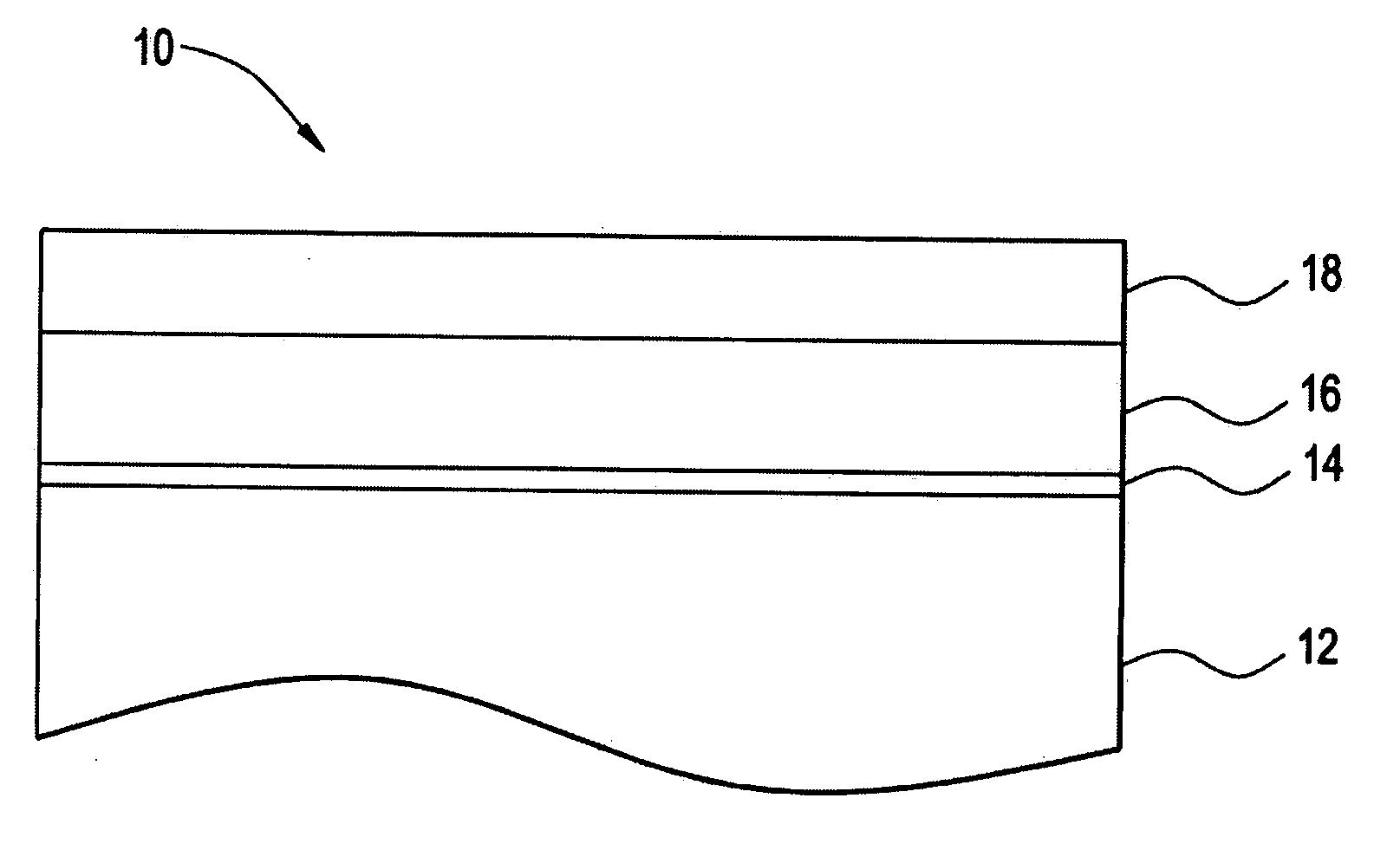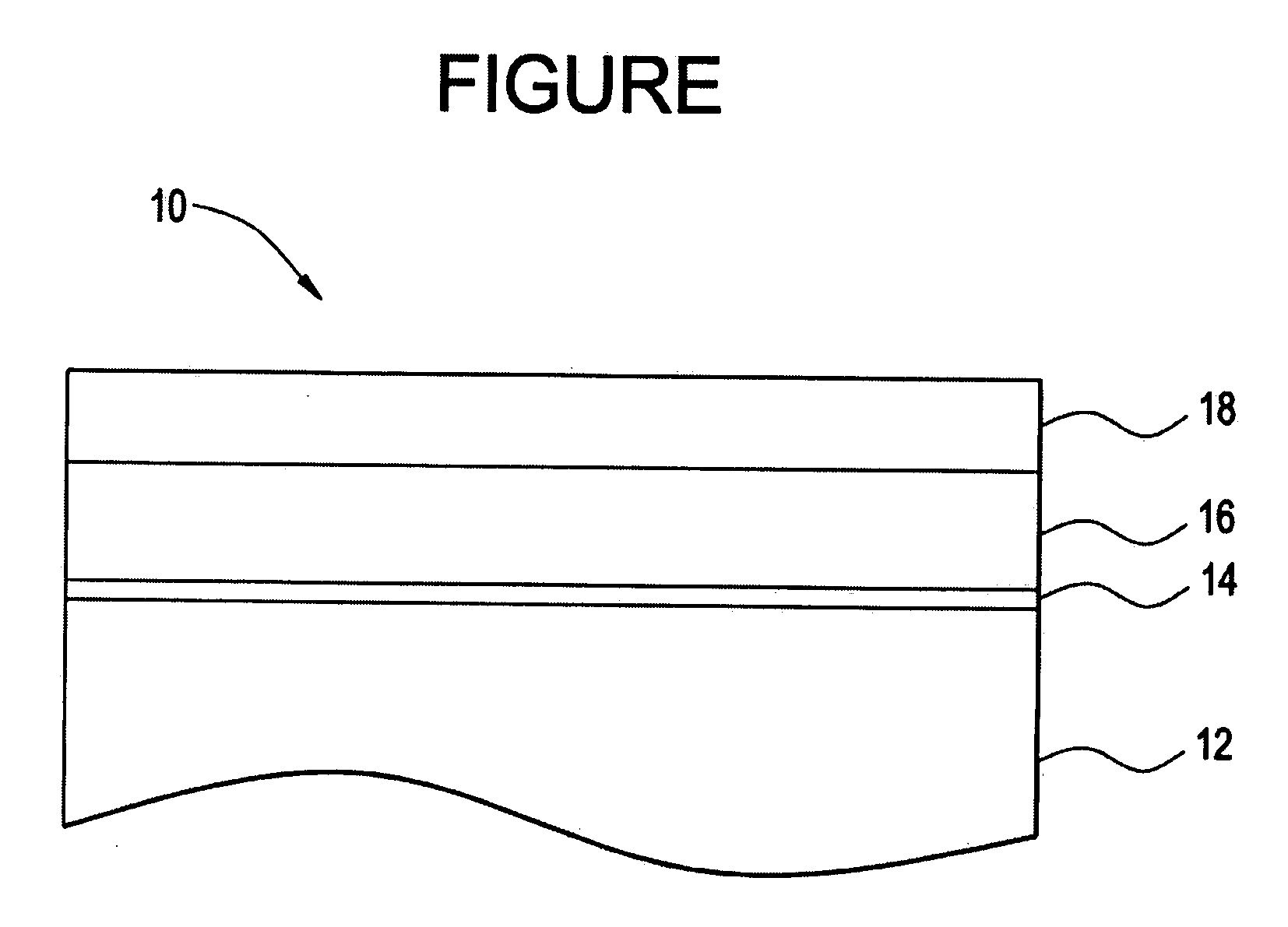Alumina-based protective coatings for thermal barrier coatings
a technology of alumina-based protective coatings and thermal barrier coatings, which is applied in the direction of superimposed coating process, natural mineral layered products, transportation and packaging, etc., can solve the problems of unintentional interference with the desired spallation resistance, affecting other properties of thermal barrier coatings, and still susceptible to various types of damage, etc., to achieve the effect of increasing the melting poin
- Summary
- Abstract
- Description
- Claims
- Application Information
AI Technical Summary
Benefits of technology
Problems solved by technology
Method used
Image
Examples
Embodiment Construction
[0016]Disclosed herein are methods for mitigating CMAS and providing anti-fouling protection to a thermal barrier coating (TBC) disposed on metallic components, e.g., gas turbine components. The process generally includes thermally spraying an alumina-based layer of onto the TBC. As used herein, the terms “alumina” and “aluminum oxide” refer interchangeably to those compounds and compositions comprising Al2O3, including, but not limited to, the unhydrated and hydrated forms. As will be described herein, the proposed coating could protect the TBC at temperatures up to about 3000° F. Moreover, in contrast to the prior methods, the application method can be completed within in minutes, without the need for drying or curing.
[0017]In one embodiment, a thermally sprayed alumina-based coating is applied to the TBC, which chemically elevates the CMAS melting point. Advantageously, the resulting thermally sprayed coating is substantially smooth so as to reduce fouling. The method for deposit...
PUM
| Property | Measurement | Unit |
|---|---|---|
| surface roughness | aaaaa | aaaaa |
| thickness | aaaaa | aaaaa |
| temperature | aaaaa | aaaaa |
Abstract
Description
Claims
Application Information
 Login to view more
Login to view more - R&D Engineer
- R&D Manager
- IP Professional
- Industry Leading Data Capabilities
- Powerful AI technology
- Patent DNA Extraction
Browse by: Latest US Patents, China's latest patents, Technical Efficacy Thesaurus, Application Domain, Technology Topic.
© 2024 PatSnap. All rights reserved.Legal|Privacy policy|Modern Slavery Act Transparency Statement|Sitemap


